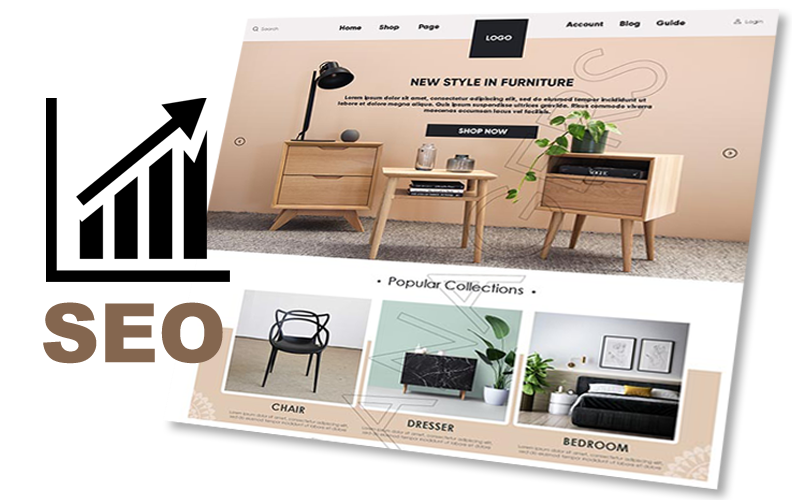Social Media vs SEO: What’s Best for Dentists?

In the modern dental industry, marketing plays a pivotal role in attracting new patients and retaining existing ones. As more dental practices embrace digital marketing, two key strategies are often debated: Social Media and Search Engine Optimisation (SEO). Both approaches offer distinct advantages, but which one is better for dentists looking to grow their practice? This article dives into the key differences between Social Media and SEO, their unique benefits, and how dentists can use them to their advantage.
Understanding SEO for Dentists
Search Engine Optimisation (SEO) refers to the practice of improving your website’s ranking on search engine results pages (SERPs). When a potential patient searches for “dentists near me” or “best dentist in Sydney,” SEO ensures your practice appears at the top of the list.
SEO for dentists involves several key elements:
-
-
On-Page SEO: This includes optimizing your website’s content with relevant keywords such as “dentist in Melbourne” or “cosmetic dentistry services.” Using the right keywords ensures that your site aligns with what people are searching for.
-
Local SEO: For dentists, local SEO is crucial. Many patients search for nearby dental practices. By optimizing your Google My Business profile, collecting patient reviews, and ensuring your website is mobile-friendly, you improve your local search ranking.
-
Technical SEO: This ensures your website is fast, secure, and easy to navigate, which are all ranking factors for Google.
-
Content Marketing: Publishing blog posts and articles on topics like “How to Improve Your Smile” or “Preventing Cavities in Kids” helps engage potential patients while improving your SEO ranking.
-
For more detailed strategies, check out our guide on Local SEO for Dentists.
The Power of Social Media for Dentists
Social Media Marketing involves using platforms like Facebook, Instagram, Twitter, and LinkedIn to engage with current and potential patients. Unlike SEO, which focuses on organic search traffic, social media allows for more direct interaction with your audience.
Key benefits of social media for dentists include:
-
-
Building Relationships: Social media allows you to connect with patients on a more personal level. You can engage with them through posts, comments, and direct messages. This builds trust and familiarity, which can lead to patient loyalty.
-
Brand Awareness: Social media is a powerful tool for increasing your practice’s visibility. Sharing posts about dental tips, behind-the-scenes glimpses of your practice, or patient success stories helps your practice stand out in a crowded market.
-
Targeted Ads: With paid social media ads, you can target your local area, demographics, and even interests related to dental care. This ensures that your ads are reaching the right people.
-
Patient Reviews & Testimonials: Positive patient experiences shared on social media can boost your practice’s reputation. A review on Facebook or a testimonial on Instagram can influence potential patients’ decisions.
-
For tips on how to improve your practice’s social media presence, be sure to read our article on Social Media Strategies for Dentists.
Social Media vs SEO: Which is Better for Dentists?
Both SEO and social media have their strengths, but the best strategy for your dental practice depends on your specific goals. Let’s break it down:
1. Patient Acquisition
SEO typically provides long-term results. When your website ranks highly on search engines, it acts as a constant lead generator. A potential patient who searches for “dentist in Melton” and clicks on your website is more likely to convert into a patient, as they’re actively searching for a dentist.
However, social media is more about creating awareness. While social media posts won’t directly lead to someone scheduling an appointment, they can lead to brand recognition. Over time, as people see your posts, they may eventually think of your practice when it’s time to book a dental appointment.
2. Cost-Effectiveness
SEO requires an upfront investment in optimizing your website, creating content, and possibly hiring an SEO expert. However, once you start ranking for key search terms, the traffic you generate is free, which can result in a high ROI over time.
On the other hand, social media can be free, but the organic reach on platforms like Facebook has declined. Paid ads are often necessary to get your content in front of your target audience, and the cost of advertising can add up quickly. However, a well-executed social media campaign can still deliver valuable results without breaking the bank.
3. Engagement and Interaction
Social media excels in fostering direct engagement with potential and current patients. You can have conversations, answer questions, and provide valuable content that resonates with your audience. This interaction can lead to increased loyalty and more patient referrals.
SEO, while incredibly powerful, doesn’t offer the same level of personal interaction. It’s more of a passive marketing strategy—patients find you when they search, but you don’t necessarily have a direct line of communication with them until they make the decision to book an appointment.
4. Time Investment
SEO is a long-term strategy. It can take months to see significant results from your efforts. Building a strong SEO foundation involves continuous content creation, backlinking, and technical improvements.
Social media, on the other hand, can provide faster results. With daily posts and regular engagement, you can quickly grow your following and see interactions with your content. However, maintaining an active social media presence requires consistent effort and creative content.
5. Local Impact
For dentists, local SEO is crucial. Local SEO ensures that your practice appears in search results when potential patients are looking for dental services in their area. This is especially important for businesses like dental practices, which rely heavily on local clientele.
Social media platforms like Facebook and Instagram allow you to target specific geographic areas with ads, but your organic posts won’t always reach people in your immediate vicinity. This makes SEO a better option for local businesses like dentistry.
The Best Strategy for Dentists
Rather than choosing between social media and SEO, the best approach for dentists is to use both strategies together. By combining SEO with social media marketing, you can:
-
-
Increase Website Traffic: Use social media to drive traffic to your website, where potential patients can learn more about your services and book an appointment.
-
Boost Brand Awareness: SEO can help your practice get found on Google, while social media keeps you top of mind.
-
Enhance Local Visibility: By combining local SEO with geo-targeted social media ads, you ensure that your practice reaches the right people in your area.
-
Improve Patient Engagement: While SEO generates traffic, social media builds relationships, helping to convert visitors into loyal patients.
-
Conclusion
Both Social Media and SEO offer valuable benefits for dental practices, but neither is a one-size-fits-all solution. For more in-depth insights into how SEO can boost your dental practice, check out our guide on SEO Strategies for Dentists.
The key is to implement both strategies effectively. By optimizing your website for local SEO and using social media to interact with potential patients, you can create a comprehensive digital marketing plan that maximises your online presence.
SEO provides long-term, consistent growth by improving your website’s visibility on search engines, while social media helps with brand awareness, patient engagement, and immediate visibility.












